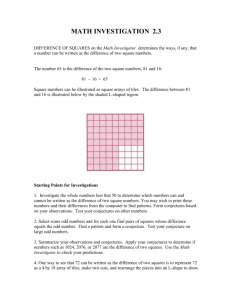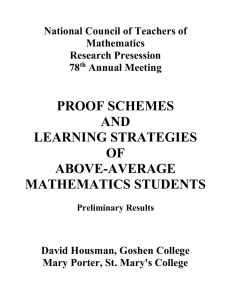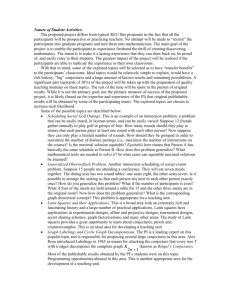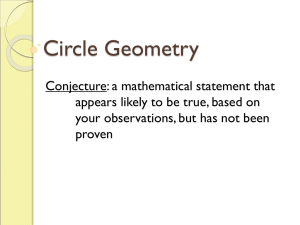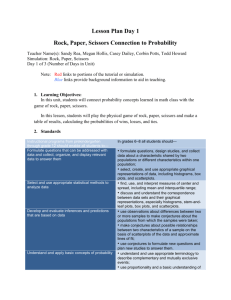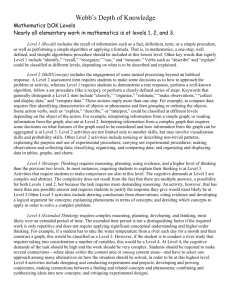Textbook Data Collection Activity
advertisement
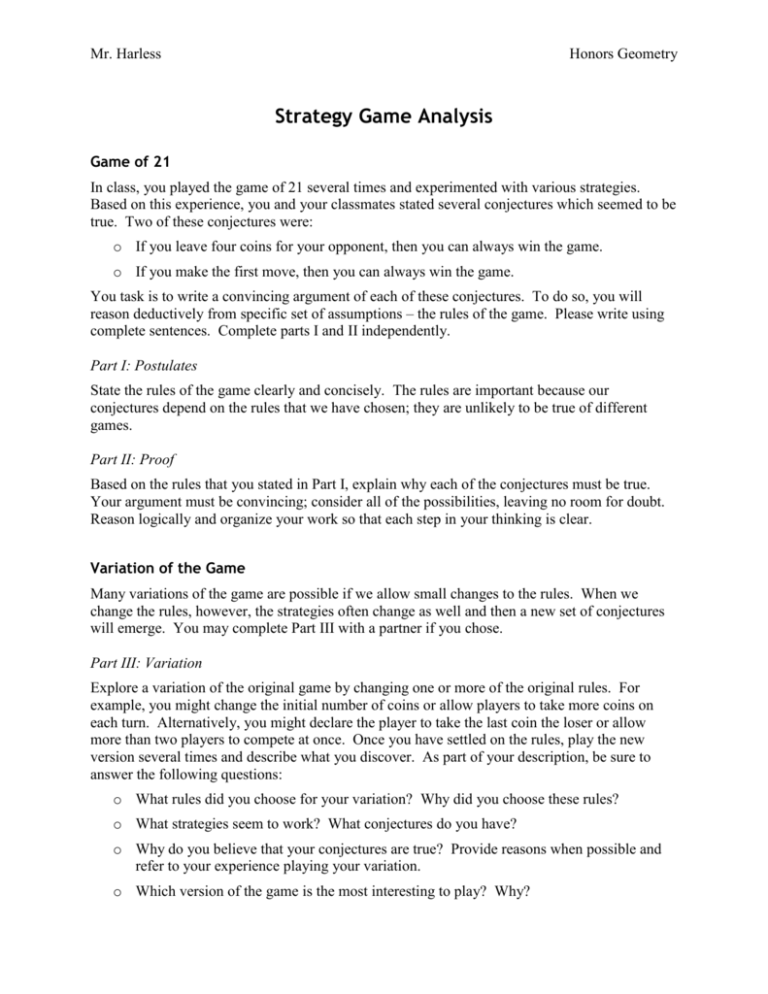
Mr. Harless Honors Geometry Strategy Game Analysis Game of 21 In class, you played the game of 21 several times and experimented with various strategies. Based on this experience, you and your classmates stated several conjectures which seemed to be true. Two of these conjectures were: o If you leave four coins for your opponent, then you can always win the game. o If you make the first move, then you can always win the game. You task is to write a convincing argument of each of these conjectures. To do so, you will reason deductively from specific set of assumptions – the rules of the game. Please write using complete sentences. Complete parts I and II independently. Part I: Postulates State the rules of the game clearly and concisely. The rules are important because our conjectures depend on the rules that we have chosen; they are unlikely to be true of different games. Part II: Proof Based on the rules that you stated in Part I, explain why each of the conjectures must be true. Your argument must be convincing; consider all of the possibilities, leaving no room for doubt. Reason logically and organize your work so that each step in your thinking is clear. Variation of the Game Many variations of the game are possible if we allow small changes to the rules. When we change the rules, however, the strategies often change as well and then a new set of conjectures will emerge. You may complete Part III with a partner if you chose. Part III: Variation Explore a variation of the original game by changing one or more of the original rules. For example, you might change the initial number of coins or allow players to take more coins on each turn. Alternatively, you might declare the player to take the last coin the loser or allow more than two players to compete at once. Once you have settled on the rules, play the new version several times and describe what you discover. As part of your description, be sure to answer the following questions: o What rules did you choose for your variation? Why did you choose these rules? o What strategies seem to work? What conjectures do you have? o Why do you believe that your conjectures are true? Provide reasons when possible and refer to your experience playing your variation. o Which version of the game is the most interesting to play? Why? Mr. Harless Honors Geometry Strategy Game Analysis Rubric The rubric below describes various levels of performance. Use the rubric to self-assess your strategy game analysis before submitting your final draft. Part I: Postulates Part II: Proof Part III: Variation 3 4 5 Some rules are included All rules are included All rules are included; rules are stated accurately and concisely 6 8 10 Intuitive reasoning is provided for each conjecture At least one conjecture is proved completely Each conjecture is proved; each proof is convincing, clearly written, and considers all possibilities 6 8 10 Variation is outlined; at least one conjecture is included Variation is described clearly; two or more conjectures are discussed Variation is clearly described and all questions are answered in detail; several conjectures are included; conjectures are relevant and welldefended
